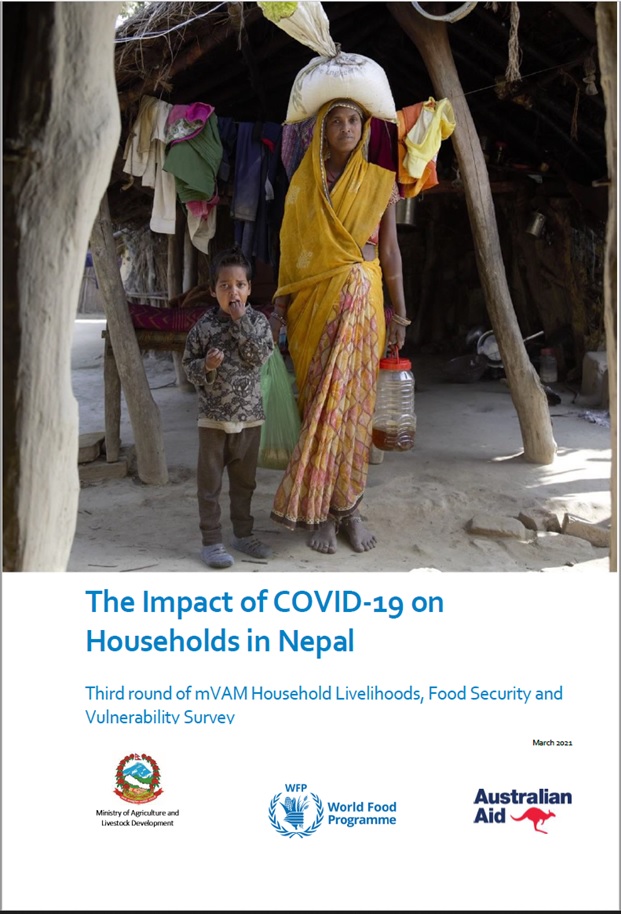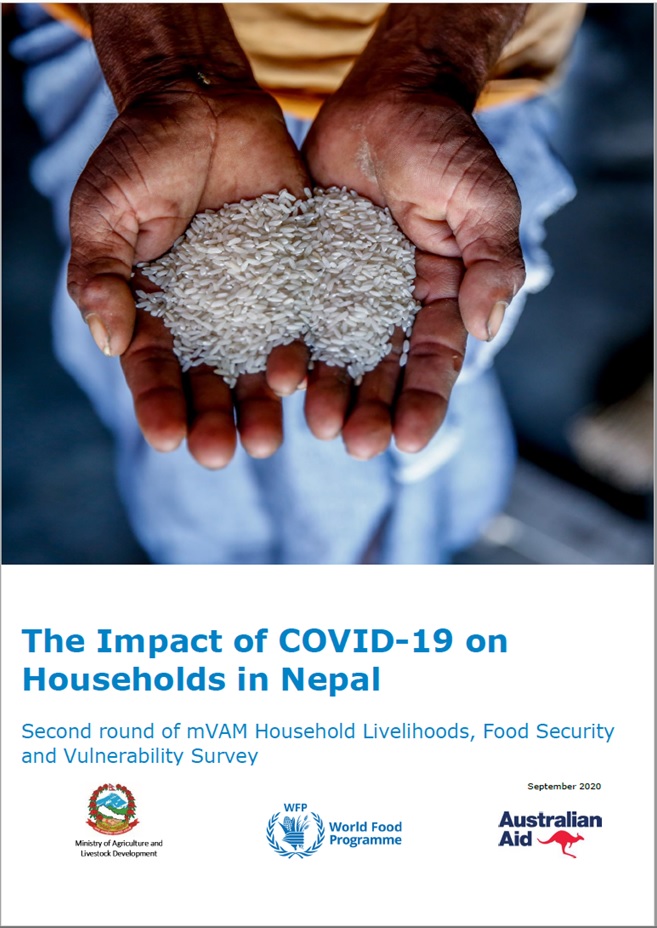Home > PUBLICATIONS > Market Watch >
Market Watch
-
Market Watch 92008-12-30

This month the central bank announced that year on year inflation in Nepal has increased to 14.5 percent, from 6.3 percent in the previous year - largely as a result of continuing high food and transportation costs
-
Market Watch 82008-11-27

Recent harvesting, particularly paddy and maize, has resulted in expected seasonal price decreases for many key commodities, including a 5.5 percent national average decrease in the price of coarse rice...
-
Market Watch 72008-10-24

Food prices have largely continued to rise across Nepal and in some parts have been further affected by the closure of the East-West highway in the Eastern and Far-Western Terai, and the Karnali highway due to floods and landslides.....
-
Market Watch 62008-09-27

Districts in the Mid- and Far-Western Hills and Mountains continue to face severe problems of food insecurity due to high food prices, natural disasters and hindered access to markets. On the positive side, the recent maize harvest has decreased maize prices substantially...
-
Market Watch 52008-08-29

Severe problems of food insecurity reported in districts of Mid- and Far-Western hills and mountains due to rising food prices, unavailability of food in the market and little or no household stock.
-
Market Watch 42008-07-28

The transport sector is currently experiencing multiple problems in the form of price hikes, fuel shortages and protests, since the Government of Nepal announced a fuel price rise in the range of 9 to 27% effective from 10 June, 2008.
-
Market Watch 32008-02-27

The price developments of key commodities provide a direct indication of the food security outlook for the different regions of Nepal. The ban on export of non-basmati rice put in place by India a few months ago, coupled with increasing fuel prices, fuel shortages and transportation strikes are already showing their impact on the food security situation of the Nepali population, particularly the poor.
News & Events
- Brief on the Food Security Situation in Nepal (Mid-July to mid-November 2017)
- Launch of Food Security Information System for Nepal
- Second Advance Estimate of 2016/17 Wheat Production in Nepal using CRAFT
- Brief on the food security situation in Nepal (Mid November 2016 to Mid March 2017)
- Updated NeKSAP guidance on food security response analysis and district food security monitoring

